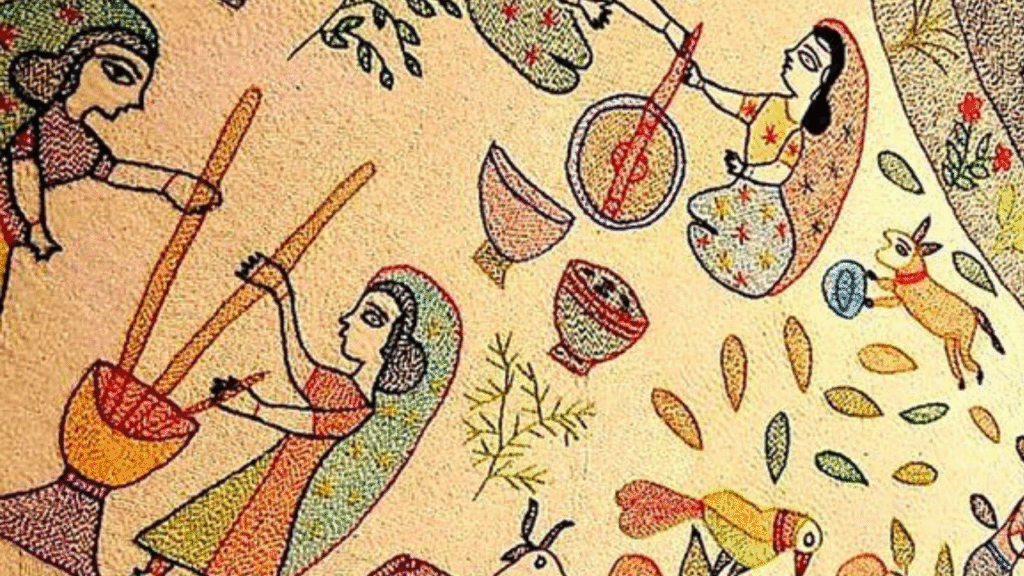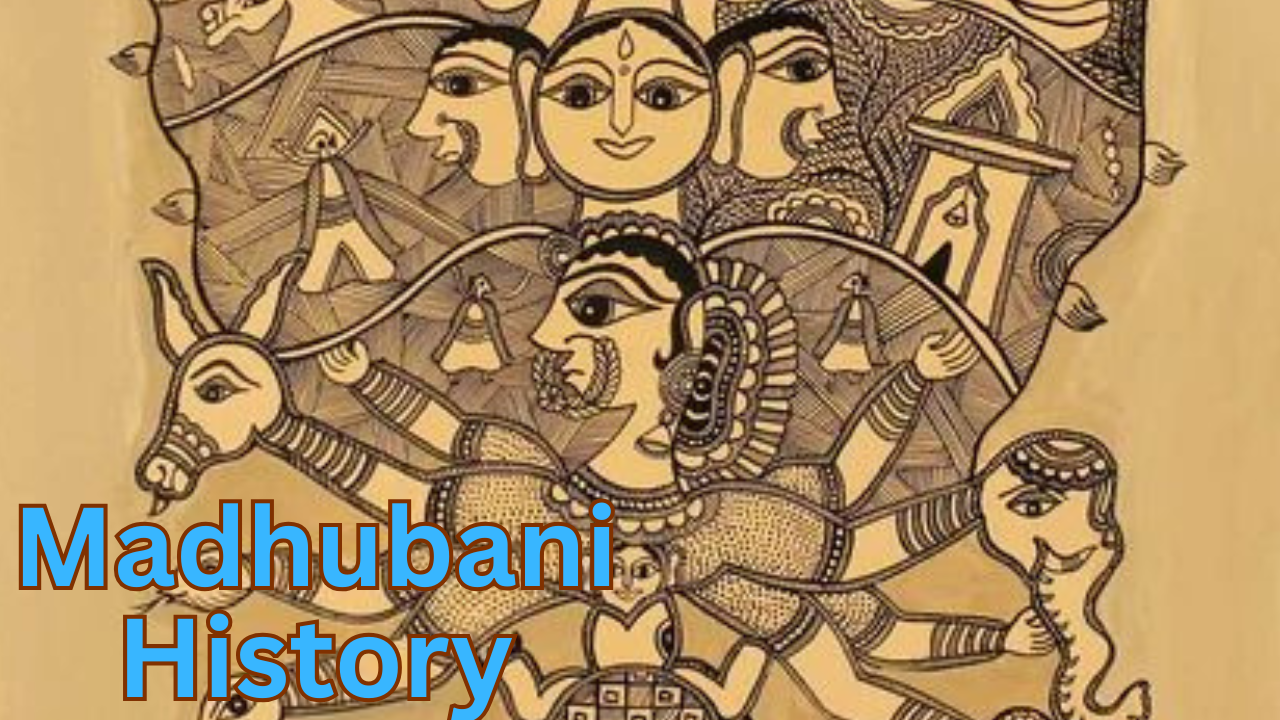When I first stepped into Madhubani. I felt like I was strolling through time. The old atmosphere the stories carved on each divider and the rich cultural soul captivated me immediately. Madhubani isn’t fair a area in Bihar—it’s a heritage-rich canvas that tells stories of kingdoms, scholars, traditions and change. In this blog, I’ll take you on a Madhubani History and a brilliant past to its dynamic present. Whether you are a traveler, a history devotee or someone fair curious about Indian legacy. This story is progressing to be a treat.
The Roots of Madhubani: Myth and Antiquity
Madhubani meaning “timberland of nectar,” is accepted to be one of the most seasoned locales in Indian civilization. The name itself evokes images of nature’s charm, cultural richness and deep ancestral roots. Legends say that this arrive was a portion of the legendary kingdom of Mithila. Ruled by Ruler Janaka the father of Goddess Sita. Yes, the same Sita from the Ramayana!
This association makes Madhubani more than fair a district—it’s a sacrosanct arrive woven into the strings of Hindu sagas. The nearness of Janaki Mandir in adjacent Sitamarhi and the various references in sacred writings grapple Madhubani in divine legend.
The Kingdom of Mithila
Generally Madhubani was a central portion of the Mithila Kingdom and one of the most prominent social and philosophical centers of antiquated India. Mithila wasn’t around regal royal residences; it was around intelligence. This land was home to legendary thinkers such as Yajnavalkya, Gargi and Ubhaya Bharati. who shaped ancient Indian philosophy. Making it a venerated situate of Vedic learning.
Women in Mithila unlike in many other ancient regions, played a strong and respected role in society. It’s held tall mental and otherworldly positions. Gargi could be a eminent logician from this locale. challenged indeed the incredible Yajnavalkya in talks about. This dynamic legacy still reflects in the craftsmanship and soul of the ladies of Madhubani.
Medieval Era: Invasions, Changes and Continuity
As India experienced intrusions and changes amid the medieval period. Madhubani moreover experienced moves. Madhubani witnessed various rulers—from Muslim dynasties and Mughal influence to the arrival of British colonial forces. In spite of these shifts the nearby culture remained strong. Conventional hones like Mithila portray, Panjis (genealogical records) and Maithili dialect proceeded to flourish.
One of the foremost interesting things I learned was how the individuals of Madhubani proceeded reporting history and parentage through verbal convention and old original copies. Panjikar (genealogists) are still found in Madhubani. Protecting family trees dating back centuries!
British Rule and Administrative Restructuring
During the British colonial period Madhubani became part of the Darbhanga locale. The British valued this region largely for its fertile lands and strong agricultural output. Particularly rice and maize development. In any case They didn’t contribute much in infrastructure or social preservation.
It wasn’t until 1972 that Madhubani was authoritatively carved out as a isolated area. This checked a modern starting for the locale. The administrative autonomy allowed for way better governance, asset management and conservation of its social character.
Cultural Renaissance: The Rise of Madhubani Painting
Post-independence and Madhubani saw a social resurgence. Especially with the recognition of its conventional craftsmanship frame: Madhubani portrays. These paintings initially done on dividers with characteristic colors amid festivals and ceremonies. Begun picking up international attention within the 1960s.
The devastating drought of 1966 ironically got to be a turning point. With the assistance of government activities and NGOs. Ladies were energized to bring their divider craftsmanship to paper for pay. This not as it were enabled rustic ladies but too made Madhubani a all-inclusive recognized center of society art.
Today, the Mithila Exhibition Hall in Japan incorporates a committed area to Madhubani depictions and worldwide presentations routinely include this unique style.
Festivals and Traditions: Living History
What makes Madhubani’s history so lively is how its conventions are still energetically celebrated. From Chaurchan Pooja to Sama-Chakeva and the world-renowned Chhath Puja. Each celebration here carries centuries of ceremonies and convictions.
The ladies of Madhubani paint their dividers with new plans each season. The themes tell stories of divine beings, nature and lifestyle. These aren’t fair enhancements; they’re living expressions of social memory.
Language and Literature: A Treasure Trove
Madhubani is also a literary gem. The Maithili dialect talked broadly within the locale is one of the 22 recognized dialects of India. It gloats of an antiquated and wealthy scholarly convention. From the poetic love songs of Vidyapati to today’s vibrant Maithili literature. The voice of Mithila proceeds to reverberate.
I was amazed to find that indeed nowadays numerous homes in Madhubani protect handwritten manuscripts passed down through eras. There are nearby libraries and community spaces where verse readings and narrating sessions are held. These traditions keep the dialect lively and flourishing.
Madhubani Today: A Modern District with Ancient Soul

Today, Madhubani has grown with time. It has schools, colleges, streets, digital framework and tourism centers. But what sets it separated is how seamlessly it mixes the ancient with the unused. You might find a smartphone-wielding teenager citing Vidyapati or a nearby artisan utilizing Instagram to exhibit conventional work of art.
The locale administration is also working to promote cultural tourism. There are heritage walks, art celebrations and nearby homestays for visitors to experience the genuine pith of Madhubani.
Must-Visit Historical Spots in Madhubani:
- Kapileshwar Temple: A spiritual and historical site accepted to be related with Rishi Kapil.
- Uchaitha Temple: Associated with Goddess Durga and gone by amid festivals.
- Saurath Sabha: Old site for arranged marriages where genealogists still keep up family records.
- Jitwarpur Village: Known for award-winning Madhubani painters.
- Rajnagar Palace Ruins: A see into colonial design and overlooked illustrious magnificence.
Fun Fact: Mithila’s Connection with Nepal
Here’s something interesting! The Mithila locale of which Madhubani is a part. Too stretches into Nepal. So socially, Madhubani offers deep ties with Nepali Maithil traditions. Cross-border weddings, language and celebrations are shared. Making this history indeed more enhancing and one of a kind.
Final Thoughts
As someone who’s traveled across many Indian towns. Madhubani felt like a otherworldly return to roots. Its history isn’t bolted in museums or dusty books—it’s alive in paintings, sanctuaries, songs and indeed within the everyday lives of its people.
In case you ever want to experience a portion of India that still whispers stories of kingdoms. Celebrates capable ladies and carries a timeless grace, at that point Madhubani ought to be on your list. From its mythological root to its modern-day social pride. Madhubani is genuinely a locale with a soul that recollects.

